Subscribe to Art + Ideas:
“I think it just shows very well how Rubens worked, how he got the inspiration from antiquity, but he transforms it into something completely new and very alive.”
The Flemish Baroque painter Peter Paul Rubens is most famous for his dynamic, colorful renderings of religious scenes and mythological stories. Yet Rubens’s work was also deeply inspired by the art of the past. He was a keen student of classical antiquity, engaging with ancient sculptures, coins, gems, and cameos both at home and in his travels through Italy. His friendships with antiquarians, patrons, and scholars provided a network for vibrant intellectual exchanges that informed the artist’s work.
In this episode, Getty curators Anne T. Woollett, Davide Gasparotto, and Jeffrey Spier discuss their exhibition Rubens: Picturing Antiquity, which explores how Rubens was affected by and, in turn, transformed the classical past in his paintings, drawings, and designs. The exhibition, which received major support from Jo Carole and Ronald S. Lauder and generous support from the Leonetti/O’Connell Family Foundation, is on view at the Getty Villa through January 24, 2022.
More to explore:
Rubens: Picturing Antiquity explore the exhibition
Rubens: Picturing Antiquity buy the book
Transcript


JIM CUNO: Hello, I’m Jim Cuno, president of the J. Paul Getty Trust. Welcome to Art and Ideas, a podcast in which I speak to artists, conservators, authors, and scholars about their work.
JEFFREY SPIER: I think it just shows very well how Rubens worked, how he got the inspiration from antiquity, but he transforms it into something completely new and very alive.
CUNO: In this episode, I speak with Getty curators Jeffrey Spier, Davide Gasparotto, and Anne Woollett about the exhibition Rubens: Picturing Antiquity.
The 17th-century Flemish painter Peter Paul Rubens was a classically trained humanist and scholar. Rubens worked in almost every medium and on many subjects, none more so than those of classical antiquity. Surprisingly, the Getty is the first museum ever to present an exhibition exploring the artist’s interest in antiquity, including drawings and paintings by Rubens, alongside some of the ancient sculptures and gems that inspired them.
In this episode, I speak with Getty paintings curators Davide Gasporatto and Anne Woollett, who have long explored the art of Rubens and the legacy of antiquity that inspired it, and Jeffrey Spier, the Anissa and Paul John Balson II Senior Curator of Antiquities at the Getty Villa Museum.
Our conversation took place in the exhibition galleries.
CUNO: Thank you Davide, Anne, and Jeffrey for speaking with me on this podcast episode. Davide, I was surprised to learn that in spite of Rubens’ reputation as a celebrated painter and formidable scholar of antiquity, that this is the first exhibition to bring these two sides of his life together in a single exhibition. Tell us the origin of the exhibition.
DAVIDE GASPAROTTO: Yes, you are absolutely right. Rubens and antiquity is a central topic for the study of Peter Paul Rubens. And I think this, in some way, is the first exhibition which focuses on, I would say, three aspects of his personality: Rubens as an artist, Rubens as a scholar, and also Rubens as a collector of antiquities. And the exhibition was born because, I think, of our holdings.
We have important paintings by Rubens in our collection. We know that Mr. Getty was very passionate about Rubens. And also, the exhibition was born out of the desire of linking in some way, our collection of paintings with the collection of antiquities.
So linking the two sides, in some way, of our museum, the Getty Center and the Getty Villa, and working collaboratively between colleagues. In this particular case, with Anne, who is a specialist in the art of Rubens; and then with Jeffrey and myself, who share a strong interest in the survival of the Classical cast, of the Classical tradition, the long influence that the Classical tradition played in European culture.
CUNO: Now Anne, Rubens is often described as an erudite painter. Tell us about his early training and how he came to know so much about Antique sources.
WOOLLETT: Rubens was fortunate to have received a Classical education as a young man. In Antwerp, he went to a well-known Latin school, where he learned Latin and Greek and read some of those early sources, important, essential literature, became acquainted with myths and some of the great philosophers at a young age. He was also the younger brother to Philip Rubens, who was a great scholar, and must’ve been a great exemplar to him.
And so Rubens was in a context in which the art and the exemplars and the inspirations of the Classical past were discussed. And he was also shaped, I think profoundly, by his time in the studio of Otto van Veen, who had a Latinized name, Otto Venius, a painter and writer, a very prominent figure in Antwerp who had been to Rome. He was interested in Renaissance art and also the art of antiquity. And although we don’t have a lot of specific information about what that studio was like, it seems that Rubens was likely to have engaged with small-scale sculptures and other elements brought back from Rome, or that transmitted some of the forms and ideas of the early sculptures to him, while he was still training in Antwerp.
CUNO: Now, as an example, we’re standing in front of a sculpture of the New Calydonian Boar Hunt. Tell us about its importance in Rubens’ work and how it came to his attention.
WOOLLETT: Yes, this is a magnificent relief from a sarcophagus. It’s really thrilling to see it here. It’s very large. It shows two episodes from the story of the hunt for the Calydonian boar. The main scene shows the hunter Meleager, on the left, plunging a long spear into the cornered Calydonian boar, a very vicious animal that had been sent to sort of terrorize everyone by the goddess Diana.
The huntress Atalanta has a bow in her hand and is assisting him. And they’re hunting dogs also helping to bring the boar down. And then on the right, Atalanta is standing with the trophy from the hunt, which is the head of the boar. This wonderful scene was in the collection of Julio Procari, an antiquarian and collector in Rome. And it’s thought that it was fixed on the exterior of his home, and so Rubens could’ve seen it there on the façade. It’s also quite possible that Rubens, in some capacity, while he’s studying antiquities in Rome, perhaps with the assistance of his brother, who had contacts, may have visited Procari, and had a chance to study it closely.
CUNO: What kind of access did one have? Did one knock on a door and say, ‘I’d like to see your sculpture?’ Or how did that work?
WOOLLETT: Well, throughout the Renaissance, in the sixteenth century, as antiquities were discovered, they were collected by aristocratic collectors and members of the sort of cardinal court and others, and they were formed into sort of sculpture gardens, if you will. So there were famous examples where I think you would make an appointment.
You would know the owner. Those collectors wanted to show these precious pieces and to make them available to important individuals, so much as we might do today. It’s a bit like a museum, in a sense, except it’s their private collections. And Rubens was facilitated in this by his contacts in Rome. And he was already a gifted artist, and I think that this also assisted him with entree to these collections.
CUNO: Yeah. Now, it’s on the wall next to a painting by Rubens of the same subject. Tell us about this painting and about how the subject might have come to Rubens’ attention.
WOOLLETT: Yes, this is a dramatic painting showing the central moment, the apex of the hunt for the Calydonian boar. The boar has turned; it’s facing the hunter Meleager, who is forcing his spear into its shoulder. And behind Meleager is Atalanta, who has loosed her arrows, which are lodged in the forehead of the boar. And two horsemen, the twins, the Dioscuri, are coming around on the right, [in] very dramatic fashion.
It’s loosely painted, in many ways. It’s an oil sketch, is how we would describe this, but there are also areas of great smoothness and finish. And it makes for a very exciting painting to look at. It is Rubens’ first hunt scene, which he paints when he returns from Italy. He spends about eight years there. And in this painting, he seems to encapsulate his exposure to not only important Antique sources, but also his knowledge of Renaissance precursors like Leonardo.
And it’s painted to resemble the relief, so it’s interesting to see it with the sarcophagus next to it. They emulate each other, except that Rubens really brings a great deal of movement and color and drama to the telling of the story. And with this painting, Rubens begins to introduce to his patrons, this idea of the mythological subject, things that will become very large compositions, different aspects of the Classical past that become the subjects for paintings.
CUNO: Is there a drawing for this painting, and is there a subsequent painting to this oil sketch?
WOOLLETT: Actually, the answer to both questions is no. Rubens seems to have composed directly on this panel, which was his practice. And the size of the panel is a standard sort of size that he used for oil sketches. It seems to have remained in his studio and probably was a source of inspiration for his students and for some of his collaborators, like Frans Snyders. As of today, we don’t know of a finished painting after this composition, but I remain hopeful that we will find one.
CUNO: So now we’re in the first gallery of the exhibition, which begins with a self-portrait by Rubens, of himself and his brother – we assume it’s his brother – and friends, not identified. Anne, tell us more.
WOOLLETT: The exhibition begins with the earliest self-portrait we have from Rubens, which shows him in the company of several other men. He is in the foreground, looking out at us. And behind him directly is his brother Philip, who we see in profile. And the painting was made in Mantua, we think, in 1602. There is a view of the famous bridge in the center of the composition, and across to the other side of the river.
There’s much discussion about who accompanies Rubens and his brother Philip here. The group of three individuals on the left remain, I think, without identification, or at least one that is conclusive. But they’re likely to be other Flemish artists, potentially, who are in Italy with Philip and Peter Paul Rubens, and part of their circle of friends, circle of perhaps proto-antiquarians or Neostoics. And the last aspect is important because the figure on the right, seen in profile, is Justus Lipsius, the Neostoic philosopher, with whom Philip Rubens studied deeply, and who was a beloved protégé.
And Justus Lipsius is here in spirit, essentially, as a mentor to this group of men, and someone who shaped their thinking and perhaps even their sort of personal code of conduct. So it’s a very sensitive group portrait, if you will, which is testimony to their mentor and to the affection they feel for him.
CUNO: Now Davide, I mentioned that there were a number of drawings in the exhibition after Antique sources. We’re standing here in front of some. Describe them for us.
GASPARPOTTO: Yes. This is a very exciting section of the exhibition. And as Anne was telling you, Rubens traveled, in 1600, down from Antwerp to Italy. Obviously, he was seeking employment, which he eventually found with the Duke of Mantua, Vincenzo Gonzaga.
But the main purpose of his trip was really to study works of art from the classical past, but also from the Renaissance in Italy. So he traveled extensively—Venice, Mantua, Florence, Rome—where he had the opportunity to see the great masterpieces of the Italian Renaissance – works by Titian, Raphael, Michelangelo, Correggio—but also to really study and absorb the Classical sculpture.
He draw several works which were, in some way, already consecrated by the Renaissance tradition. They were famous antiquities placed in some of the major collections and public spaces in Rome. Here, for example, we see two wonderful drawings, one in red chalk and one in black chalk and charcoal, of one of the most famous Antique sculptures at the time in Rome, the Torso Belvedere, which has this name because it was placed in the Belvedere courtyard, which was the core of the collection of the Pope in Rome, and was there since the early sixteenth century, admired by many artists.
Supposedly, Michelangelo said that this sculpture didn’t need to be restored—so it was like a fragment, a torso—because it was so beautiful. It was already perfect as it was. It’s interesting to see how Rubens approaches a tradition, in some way, the Renaissance tradition of drawing after Antique sculptures, because his approach is very distinctive, and in some way, very new.
Sometimes he approaches the sculpture from a sort of more traditional frontal point of view; but as we see in the wonderful drawing in red chalk from the Metropolitan, he approaches sculpture from unexpected point of views. Here, he’s completely focused on the back of the sculpture, on the muscles of the back of the figure. He also very lightly suggested the presence of a head, which actually was not on the sculpture.
And you have really the impression of a living creature, of a real body. And in fact, we know that in some writings, Rubens suggested to artists to, yes, that it was important to copy from Antique sculptures, but also that you didn’t have to feel the smell of stone, as he says. You have to, in some way, recreate, internalize these poses, these, beautiful bodies, but then rendering them with the powerful sense of life. And this is what Rubens does.
He approaches these subjects with this powerful sense of vitality, of dynamism. He gives a real sense of life to these creations.
And then he translates in his paintings—for example, in our painting of The Entombment, he translates the idea of the male heroic, muscular body into new figures. In the case of our Entombment, in the figure of the dead Christ. So the experience of the direct encounter with antiquity is crucial for Rubens’ entire career. In some way, this moment is really the beginning of his entire trajectory as an artist.
CUNO: Now, what about The Death of Seneca? How did Rubens see it and how did he respond to it?
GASPARPOTTO: Rubens’ brother Philip was a pupil of a famous humanist and philosopher, Justus Lipsius, who had a strong interest in Seneca’s philosophy and writing. He published a very real edition of Seneca’s writings, which was illustrated, at some point, with engravings after drawings by Rubens. So I think we have in front of this painting from the Prado, which depicts the death of Seneca, the suicide of Seneca, we have to think that we have a sort of a philosophical component, which comes from the interest of Justus Lipsius and his circle, of which Rubens was a part, for the philosophy of Seneca.
And for Seneca as an example of virtue or as a sort of an alter Christ, a new Christ, because he faced death with courage and imperturbability. But at the same time, Rubens, to depict this composition, he employed some antiquities that he knew. In particular, the head of the philosopher, is inspired by an Antique bust that Rubens bought in Rome, a bust that, at the time, was believed to be a portrait of Seneca.
And we have here one example that probably is the one owned by Rubens, this Antique head of, we say now, Pseudo-Seneca, which comes from Oxford, and which potentially was owned by Rubens. But for the body of this old man, Rubens based this invention on another antiquity, which was famous at the time in Rome. Was a sculpture in black stone, in black marble, which was restored at the beginning of the seventeenth century, as Seneca dying in the bath.
So what you see here, this figure of an elderly man inside a basin, with his surgeon cutting the veins. And then his pupils that are sort of taking notes of the last word of the philosopher. It’s a powerful composition and a powerful rendering of the body, but based, in some way, on two Antique sources.
CUNO: Next to the Seneca is a painting of The Entombment of Christ. It’s based, I think you said earlier, on a sculptural model. How POSSIBLE TO MAKE THIS CUT? easy was it to translate an ancient source into a Christian source?
WOOLLETT: This, I think, is one of the fascinating ways in which we find Rubens deeply ingesting his exposure to a famous work of antiquity. In this case, the Laocoön, which was a multi-figured group discovered in 1506.
He would’ve seen it in the Belvedere Court at the Vatican, along with the Torso Belvedere. What interested Rubens, in part, with this group and its presence here in this altarpiece, which was made for a public in the north, presumably, it is the emotional quality of the figure. And Rubens has found a way to portray the body of the dead Christ, who’s sitting on the Stone of Unction, in an extremely powerful physical fashion.
There is a great deal of muscularity in the figure, and expressiveness in the way that the body arches back, and in particular, in the expression on Christ’s face, which is very dramatic and forceful. And these are elements that Rubens found in the Laocoön, a Hellenistic sculpture of great expression, of great drama and pain and suffering.
One of the other aspects of the sculpture that Rubens brought to Antwerp with him was the way in which he could convey the sense of suffering through the body, by enabling it to be visible from long distances. So by painting in a sculptural fashion, if you will, it made the figure group, in this case, quite visible from a distance, and helped convey the ultimate devotional message of the painting.
CUNO: So we’re in the corridor between one big gallery and another large gallery, kind of a camerino with a sense of scale and character of a collection of paintings and drawings of gems and books with engravings. Jeffrey, what about the role of ancient gems in Rubens’ work, and his circle?
JEFFREY SPIER: Well, both coins and gems were really some of the most important objects that inspired scholars and artists of the Renaissance. They were widely collected. Rubens would’ve known at least coins, and probably gems also, in his youth, even before he went to Italy. There were large collections in the lowlands.
There were books on coins, especially, which allowed people to identify all those portraits in marble, which had no inscriptions, but the coins had inscriptions. That’s how we know what the emperors looked like, and quite a rich range of mythology on them, as well. Gems weren’t as well published, gems and cameos, but they did survive in large quantities. Each one was unique. But they provided a very interesting range of mythological types and portraits, often imperial ones, the portraits of emperors and empresses.
When Rubens was in Italy, he acquired many himself, and was able to see some of the most important collections
But a big event that happened to him, and this is part of his, again, going back to his circle of intellectual acquaintances throughout Europe, he was contacted by someone named Nicolas-Claude Fabri de Peiresc, who lived in Aix-en-Province, and was a noted collector and antiquary with a wide and very large circle of acquaintances he corresponded with. And he had just discovered an enormous cameo in the treasury of Sainte-Chapelle in Paris, of the church treasury, which had been there through the Middle Ages.
But he was able to identify it as the Roman imperial family, because of his knowledge of coins. And he wrote to Peiresc, and the two men decided to do a book about gems. And for many years, they corresponded and sent each other drawings and engravings that Rubens had made and prepared. Unfortunately, the book never appeared; it was never finished. But we are able to reconstruct bits of it. There are some engravings that do survive, and some of Rubens’ drawings, which we show here.
Peiresc is the other sort of hero of this story. He and Rubens really enjoyed their shared interest in antiquity, and would correspond often. We have many of their letters, and these are fascinating to see, to give insights into their thoughts and interests.
We also have in this corridor, portraits of Roman emperors, ultimately derived, again, from coins and gems, but used for a different purpose. Anne can tell you more about that.
WOOLLETT: Oh, yeah, it’s so interesting, isn’t it, Jeffrey? Rubens had all of these antiquarian interests. And in addition to the gem book, he was also working on another antiquarian project, showing the illustrious Greek and Roman men of antiquity, twelve likenesses that were based on busts, we think that were in his personal collection.
This project seems to have continued until the late 1630s. The last prints made from Rubens’ drawings are dated 1638. And we have one here in the exhibition, Rubens’ drawing of the Emperor Julius Caesar, and then the beautiful print that was made after the drawing. And Rubens had been interested in these figures for a long time. Adjacent to the drawing, in fact, is a painting from the mid-twenties, of Julius Caesar, in which, you know, Rubens, in full color and beautifully-descriptive brushwork, paints a portrait of the emperor.
But the print series is fascinating because it really shows Rubens enacting his own critical theory that we have learned about earlier, in which he said as a young man, that, you know, artists should choose their Classical sources wisely, and that their own work should not smell of stone, so to speak. So although these portrayals of the twelve illustrious Greek and Roman men of antiquity are based on stone models, Rubens is giving them a sense of life, and a kind of veracity that’s quite fascinating.
CUNO: And tell us about this large pictorial gem in this other gallery.
SPIER: One of the largest surviving cameos is this very large agate plaque – it’s almost a foot wide – showing the imperial family, the emperor, empress, and his children in a chariot drawn by centaurs. And he’s being crowned by the personification of victory.
He viewed this correctly as a image of the triumph, an emperor celebrating a military victory. We don’t know where this was found. We do think it might’ve been owned by Rubens; it was certainly in Antwerp. And he certainly drew it, because an engraving of it survives that’s clearly in his style. We have that here in the exhibition. It had a sort of a notorious history after that. It was sent from Antwerp on a ship of the East India Company, to be sold to the Mughal court in India or Persia. And it shipwrecked off the coast of Australia. This is sort of one of the horrors-of-seafaring stories. The Batavia shipwrecked in 1629, and there were mutinies and murders. But somehow, the cameo was recovered from that shipwreck and brought back to Antwerp.
CUNO: What about the frame in which the cameo is seen?
SPIER: It has a very ornate gilt frame studded with precious gems. We’re not sure of the date. We know it was on there [CAN YOU CUT: when it] by the early eighteenth century; there’s a drawing of it. We don’t know whether it was part of the Rubens’ time drawings. It may’ve been made for the shipment to be sent to the Mughals.
CUNO: What about this large painting of a pictorial gem? It’s strange in its size and scale. And it’s strange that you’ve had a painting of a gem.
SPIER: This is a much enlarged painting of a cameo that’s about four feet tall. It’s strange, indeed. I mean, this is typical of Peiresc, really. This was the cameo that he rediscovered in the treasury of Sainte-Chapelle in Paris. The largest known cameo – it’s about a foot tall, the original, kept in the Bibliothèque Nationale in Paris – that Peiresc was able to identity as the Emperor Tiberius, with Germanicus before him, and a deified Augustus above.
Peiresc really loved this gem and he pestered Rubens to make this painting for him so he could put it up in his study. And we have a lot of letters over the years saying, well, you know, ‘When is my painting coming?’ But eventually, it was finished and Peiresc was delighted to receive it from Rubens.
CUNO: So Davide, what about this painted oil sketch by Rubens, of Neptune calming the tempest?
GASPARPOTTO: It’s a wonderful sketch, and it is one of the several sketches that we are showing here in this gallery. And in some way, the main theme of this gallery is the interest of Rubens for Roman imperial processions and triumphs.
Obviously, he knew very well, from Roman public monuments, Roman public sculptures, but also from the iconography of gems like the one that Jeffrey showed you, the so-called Gemma Constantiniana from Leiden, or coins, how Romans [were] portrayed and how triumphal processions were depicted. And he took inspiration from these sources, for a sort of reenactment, a recreation of triumphal processions.
In this case, this painting is related to a big project. In 1635, Rubens was entrusted with the decoration of a series of triumphal arches, which were erected in the city of Antwerp to celebrate the triumphal entry of Cardinal-Infante Ferdinand of Spain, who won important battles against Protestants. We have to think that we are in this very dramatic moment in the history of Europe, when there were constant battles, constant fights between Catholics and Protestants.
And the sketch from the Fogg Art Museum, it’s the sketch for one large painting which was decorating one of these triumphal arches. Actually, the stage of welcome, the main, the principal arch. And it’s paired here in the exhibition with another sketch from our collection, which depicts another episode of this saga, sort of, of the Cardinal-Infante Ferdinand.
It’s interesting here that Rubens employs the iconography of Neptune, the god of the sea, calming the tempest, but adapting it to a contemporary situation. Because in the very foreground, we have Neptune, that with this gesture, calms the tempest, accompanied by nereids, by sea horses, and by a triton. But in the foreground, we see contemporary boats, contemporary vessels, which are the ones which were taking Cardinal-Infante from Barcelona to Genoa.
It’s wonderful to see how Rubens, in some way, adapts the ancient sources for something that is tied to a contemporary event. And actually, a few years after this event, a lavish volume, which is exhibited here, was published in 1642, and with wonderful engravings illustrating all these arches and decorations on them.
And the text, the very learned, erudite text was written by a friend of Rubens’ and a scholar, Jan Gaspar Gevartius, who also is present in the exhibition with a fabulous portrait painted by Rubens at the same time. So in the sketch, we see in the foreground, the figure of a muscular, powerful figure of Neptune, with his arm raised, calming the tempest, and accompanied, by sea creatures and a triton. And in the background, we see contemporary vessels, which are meant to depict the boat that Cardinal-Infante took to go from Barcelona to Genoa.
CUNO: And next to the two paintings that Davide just described, the oil sketches, we see an engraving, it’s a blow-up of the engraving, because it’s here to give us the sense of scale and a sense of the importance of this. But it’s actually much smaller than the actual triumphal entry itself. Tell us more about triumphal entry itself, how it functioned, but also what happened to those great big paintings?
WOOLLETT: Yes, we’ve taken a wall of the exhibition and used it to present an enlarged print from the commemorative volume for the 1635 entry, the Pompa Introitus Ferdinandi, in this beautiful folio, is in the middle of the gallery where we’re standing. The engravings are by the very talented Antwerp artist Theodoor van Thulden.
It’s a fascinating event. And it was, I think, one of the periods in which, you know, hard-working Rubens worked harder than ever. The city decided to honor the Cardinal-Infante Ferdinand at rather short notice. And because Antwerp had a long history of very splendid triumphal entries honoring sovereigns, they wanted to really show the Cardinal-Infante Ferdinand that the city maintained this elite cultural ability.
And so Rubens collaborated with the city secretary, Jan Gaspar Gevartius, known as Gevartius, and also the former mayor and antiquarian, Nicolaas Rockox, to come up with a program for the entry. And so this fantastic graphic expands from the book to a much greater scale.
The image showing the stage of welcome, which was the first element, on the main part of the entry that the Cardinal-Infante Ferdinand would’ve experienced, it’s a bit like a very elaborate triptych, if you will. And it was located at a corner in the route, so as he turned, he would’ve passed by this three-part structure, which has large decorative elements at the top. This particular structure was about twenty-two meters tall. So you can imagine it was quite something.
Made of wood and plaster, it had real fruit and flowers; it’s covered with banners. There were probably musicians nearby. And the paintings that were made after Rubens’ sketches were made by other artists in Antwerp, in sort of a collaborative way. It was an all-hands-on-deck situation, frankly, that winter when the city’s preparing them. So the paintings, which survive, actually, from the beautiful oil sketch that Davide described at the Fogg, is now in Dresden; and the one for the other sketch we have here is in Vienna. And they’re about ten-by-thirteen feet.
And they were seen on this structure for six weeks, so beyond the day that Cardinal-Infante Ferdinand visited. And in the end, the City of Antwerp offered a gift to the Cardinal-Infante, and he requested all of the paintings by Rubens and the Antwerp painters. And these were all sent to Brussels.
Unfortunately, in the early eighteenth century, there was a terrible fire on the Coudenberg hill, at the royal residence in Brussels. Most of the works were lost. And only a few, including the works in Vienna and Dresden survived to tell us what it looked like.
CUNO: Jeffrey, what about the sculpture of Silenus and the drawing related to it and the painting related to the drawing? It gives us a sense of how he worked with antiquity.
SPIER: Yes, I felt that was what we were trying to do here, and I think it does it well. We have the actual ancient sculpture of a fat, balding, Silenus, a follower of Dionysus who’s part man and part goat, leaning on his wine jug. Rubens saw this in the Chigi Collection in Rome when he was there.
And he drew it in black chalk, in this very beautiful drawing, where he’s already— It’s fairly accurate, but he’s already adding elements to it and thinking about what he can do with this image. And then we see a great painting from the National Gallery in London, where he appears again. But he Silenus now is certainly not stone. He’s quite rotund and fleshy and very drunk-looking, being held up by satyrs who are accompanying him.
And I think it just shows very well how Rubens worked, how he got the inspiration from antiquity, but he transforms it into something completely new and very alive.
WOOLLETT: This wonderful painting is just boisterous and jolly. It’s the kind of imagery that Rubens really makes famous; it becomes very associated with him. And there was great interest, I think, in this kind of Bacchic subject in the Low Countries, in Southern Netherlands.
And this work, fascinatingly, has the participation of Rubens’ great pupil, although he’s probably now working as an independent master, Anthony Van Dyck. And we really feel his presence here. He has a sort of flickering, very liquid style of painting, and it really enlivens this procession, which is moving across the canvas from right to left; from sort of darkness, where there’s a torch lighting up a couple in the, on the right-hand side of the painting, and into the daylight.
And it is a way of helping us understand that Rubens and his collaborators, his associates in Antwerp, were producing a number of large-scale works at any one time, and that his ideas about the ideal Arcadian lifestyle, the pastimes, the daily experiences of these characters from mythology, have a very great vividness and were appropriate scenes for the court; the sense of the, you know, extremely strongly-characterized individuals in this scene. I think Rubens had a sense that all of these different characters in the mythology had important roles to play. He tends to clearly convey their different types and their participation. So we can enjoy the rough-and-ready aspects, as well as the beautiful aspects of the Antique.
CUNO: Davide, Anne, and Jeffrey, thank you for this beautiful and learned exhibition. It is, to coin a phrase, a gem and a triumph.
GASPARPOTTO: Thank you very much, Jim.
SPIER: Thank you, Jim.
WOOLLETT: Thank you, Jim.
CUNO: This episode was produced by Zoe Goldman and Karen Fritsche, with audio production by Gideon Brower and mixing by Myke Dodge Weiskopf. Our theme music comes from the “The Dharma at Big Sur” composed by John Adams, for the opening of the Walt Disney Concert Hall in Los Angeles in 2003, and is licensed with permission from Hendon Music. Look for new episodes of Art and Ideas every other Wednesday, subscribe on Apple Podcasts, Spotify, and other podcast platforms. For photos, transcripts, and other resources, visit getty.edu/podcasts/ and if you have a question, or an idea for an upcoming episode, write to us at podcasts@getty.edu. Thanks for listening.
JIM CUNO: Hello, I’m Jim Cuno, president of the J. Paul Getty Trust. Welcome to Art and Ideas, a podcast in which I speak to artists, conservators, authors, and scholars about their work.
JEFFREY SPIER: I think it just shows very well how Rubens worked, how he got the inspiration from a...
Music Credits
“The Dharma at Big Sur – Sri Moonshine and A New Day.” Music written by John Adams and licensed with permission from Hendon Music. (P) 2006 Nonesuch Records, Inc., Produced Under License From Nonesuch Records, Inc. ISRC: USNO10600825 & USNO10600824

See all posts in this series »






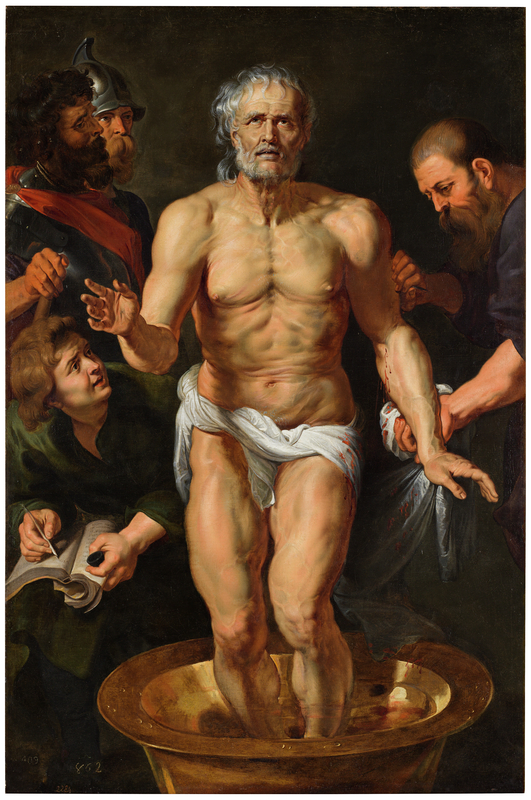
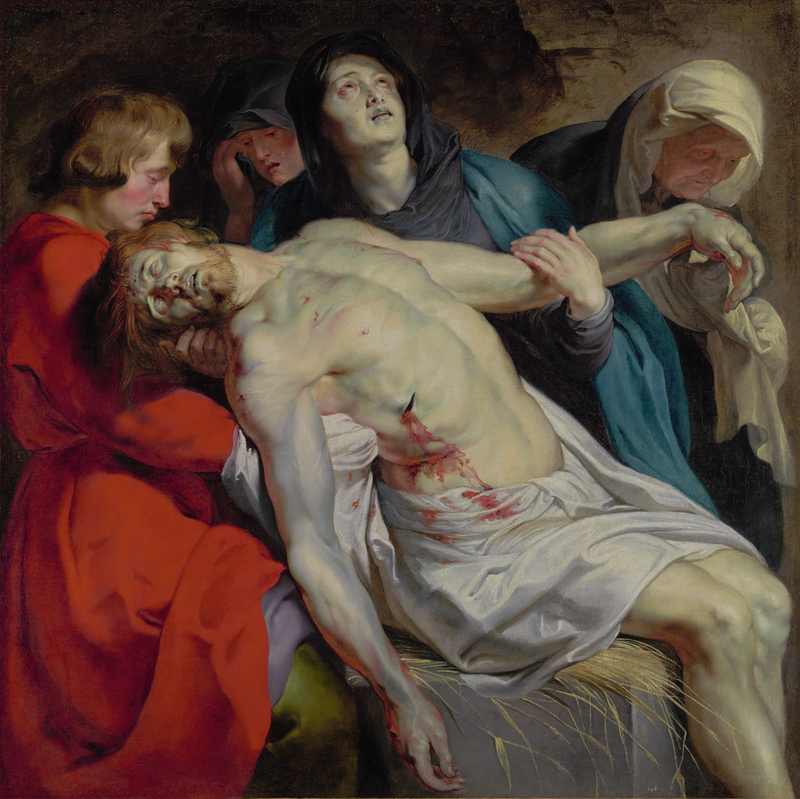
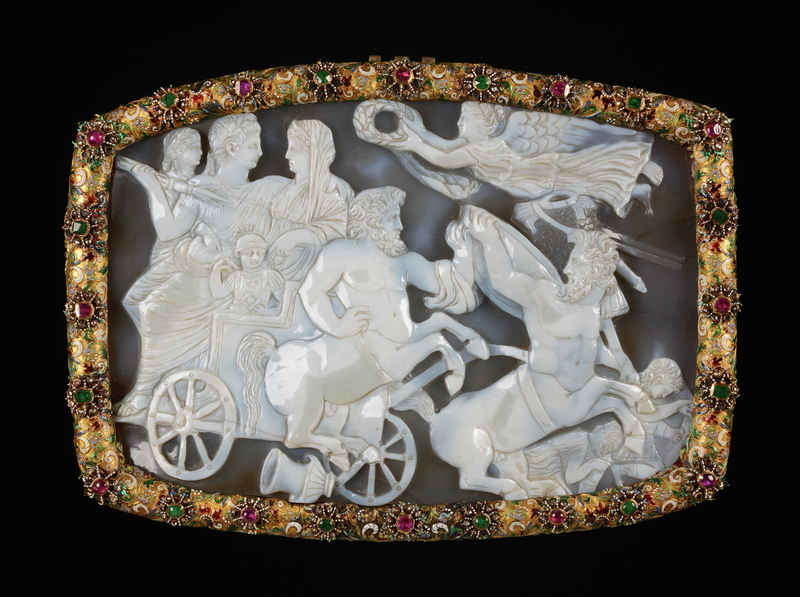
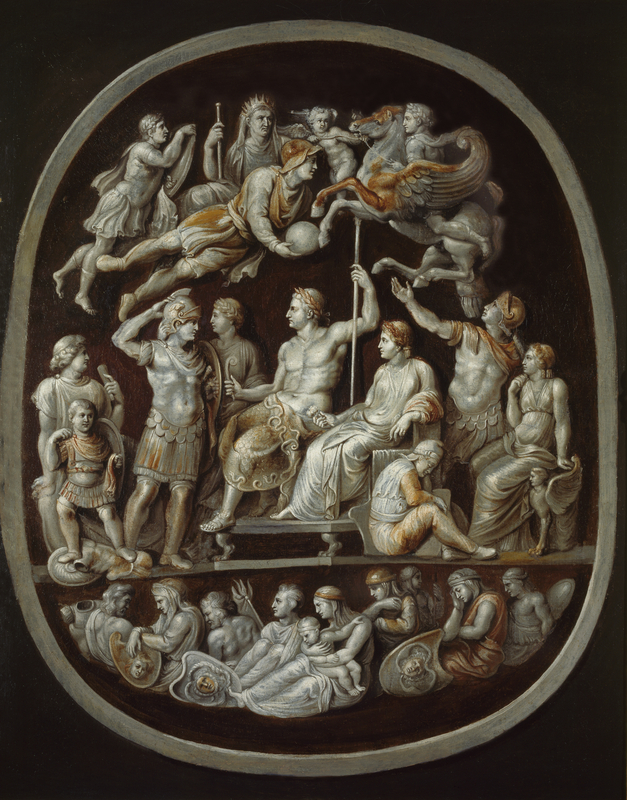


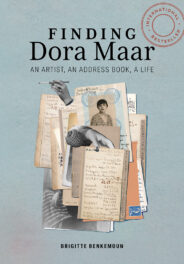
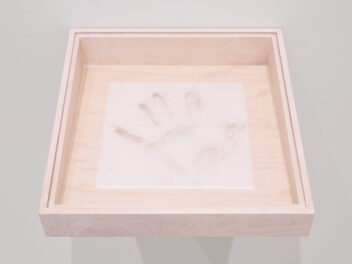

Comments on this post are now closed.